#hanseatic period
Text
Examination of recently discovered wreck from the 17th century

While conducting a routine measurement in the Trave river, the Kiel-Holtenau Waterways and Shipping Authority (Wasserstraßen- und Schifffahrtsamt/WSA) discovered a ship at a depth of eleven meters. Researchers from Kiel University spent eight months examining the puzzling construction. The result: what they had found was a nearly 400-year-old ship from the Hanseatic period with 150 barrels on board—a unique find in the western Baltic region.
What is left of the ship are wooden beams and large parts of the cargo. They are covered in mussels and must have lain there in the murky water of the Trave river for centuries. "Independent dating of the ship's timbers in three different laboratories revealed that the ship must have been constructed in the mid-17th century," said Dr. Fritz Jürgens of the Institute of Prehistoric and Protohistoric Archaeology at Kiel University. Read more.
207 notes
·
View notes
Text
The Wismar Wreck
In 2017, archaeologists led by Jens Auer of the Mecklenburg-Western Pomerania State Office for the Preservation of Monuments discovered three wrecks from the early Hanseatic period in the harbor entrance of Wismar.

The Wismar wreck in 3-D scan on the bottom of Wismar Bay (x)
The third wreck is a sensation because it lay under the two others and is about 26m long and 8m wide. It was built in clinker technique and maybe it was not used for a long time.The ship was built around 1184 in Halland, in what is now southern Sweden, then part of Denmark. At the time of Danish King Waldemar II, there was a peaceful period with flourishing maritime trade. Grain, amber, goods from all over Europe, the Near East and even Persia were traded. The Wismar Wreck is a witness to this time and is even older than the city itself. It is believed that it was once a transport or merchant vessel that had a hole that they tried to repair before the ship sank off Wismar.
Since 2018 the wreck is now in Brede near Copenhagen to be processed and preserved.
The conservation process consists of two steps. First, the oak wood is impregnated with a polyethylene-glycol-water mixture and then freeze-dried. The polyethylene glycol serves as a substitute for the missing cellulose in the wood and protects the planks from cracking and deformation. All the individual parts of the wreck are placed on a kind of "sheet" that is pushed into the circular freeze dryer. The conservators around Jan Bruun Jensen make sure that the heaviest timbers are at the end, where it is easiest to reach. Some timbers weigh more than 100 kilograms. They remain in the freeze dryer for three to four months. And because there are 300 individual parts, the process is very time-consuming. Afterwards, it will return to Wismar to be exhibited there.
#naval history#naval artifacts#wreck#wismar wreck#medieval seafaring#12th century#sweden#denmark#germany
40 notes
·
View notes
Text

So here is my collection of books from Osprey Publishing based around the Middle Ages, in this case 1000's to 1500's. 15 in total, which is the majority of my collection. Although I do think one is missing.
Going from top to bottom-
Top row:
Castagnaro 1387
Campaldino 1289
European Medieval Tactics (2)
Forces of the Hanseatic League
Towton 1461
Tewkesbury 1471
Middle row-
Teutonic Knight vs Lithuanian Warrior
Mongol Warrior vs European Knight
Otterburn 1388
Bosworth 1485
Longbowman vs Crossbowman
Lewes and Evesham 1264-65
Bottom row-
Viking Warrior vs Anglo-Saxon Warrior
Viking Warrior vs Frankish Warrior
Shrewsbury 1403
Knights at Tournament
Medieval Indian Armies (1)
Medieval European Armies
So... yeah. Nerd I am, and a self-avowed armchair Medievalist. But it's such an interesting topic, especially the military side of it especially since there really is a lot more to the Medieval period than what people think.
39 notes
·
View notes
Note
continuing with the vesna clothing asks.....what sort of fabrics and dyes were the most common back then? this is a totally innocent ask with NO ulterior motive btw
Hi Amelia, thank you for the ask!
Medieval dyes are interesting. Everyone had access to the same basic range of colours, but a rich person's red gown would be dyed first in a batch, and a poor person's might be dyed in colours that had already been used on half a dozen other garments, so they'd be paler, less consistent, and hold the colours less well. Imported fabric would be the most costly and well dyed, even at this point ideally from italy. The most expensive fabric available is silk; most people wear linen or wool, with notably a much looser and less consistent weave than basically anything you could get today, unless you make it with period/region appropriate spindles and looms. Weaving technology (and even the genetics of sheep!) improves a LOT in the centuries after Vesna.
People knew a lot about dyes, and dyers were important, respected craftspeople; the wool market dominated the english economy at this point, and the hanseatic league became a sort of pseudo-government that stretched across northern europe initially on the strength of the fleece market. Italian city states became renowned for how beautiful their red dyes and so on were, and the silk road is exactly what it says on the tin.
In terms of actual colours and the plants used for them, this is the resource I go to for that, alongside some smaller german language ones. Good luck with your lack of ulterior motives, and thanks for the ask!
19 notes
·
View notes
Text
The “frozen” dative case in Norwegian
I went down a rabbit hole on Norwegian Wikipedia last night and thought I’d share some of the cool things I learned about the rarity - but not complete lack! - of a dative case in (modern) Norwegian. It really spiced up my Thursday night.
First up, what is the dative case?
The dative case is a grammatical case, used in Old Norse, and other languages like German, Icelandic, Latin, Russian, Hungarian and others. It is used mainly to mark the indirect object in a sentence. In German, the dative case is also used after certain prepositions and for direct objects of certain verbs - but let’s not get into that...
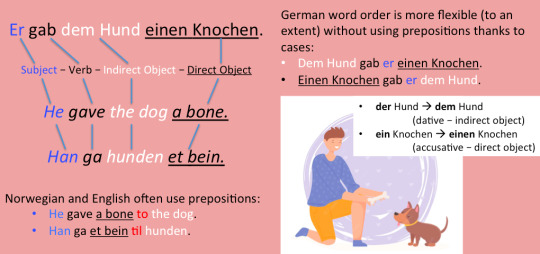
English, like modern Norwegian, relies on word order and prepositions to show what function (subject/direct object/indirect object) a noun has precisely because the definite and indefinite articles in these languages do not show grammatical case.
What happened to the dative case in Norwegian?
In the official written languages, Bokmål and Nynorsk, the grammatical cases have disappeared. However, there are a few remnants of dative in some fixed expressions with “frozen dative endings” such as:
i søvne - du snakket i søvne (you talked in your sleep)
i live - hun er i live (she is “in life” alive)
i tide (jeg kom ikke i tide - I didn’t come in time)
av gårde - skal vi komme oss av gårde? (should we get out of here? - it probably comes from having to leave the farm gård you were on)
gå mann av huse - folk gikk mann av huse for å se den nye filmen på kino (people went out in swarms to see the new film at the movies - it means to go out in large numbers for the same thing)
i hende - du har et farlig våpen i hende (you have a dangerous weapon “in hands” in your possession)
i svime - noen slo meg i svime (someone hit me into a daze = someone knocked me out)
These dative expressions in modern Norwegian usually have a preposition in front of them, as certain prepositions were dative (this is still the case in German). In fact, the word fordi (because) came from two words: for and di - di is the dative form of det, so one is actually just saying “for det” 😉
So what happened, and when? In the Middle Ages, the Scandinavian countries had close contact with the Hanseatic League, whose members mostly spoke Low German and often became clergymen for the state and the King. In Denmark-Norway, Low German was even the official language at the King's court for a period, and it stayed the main language for foreign affairs and commerce even longer (1400s–1500s). Hanseatic merchants made up a large part of the ruling class in the cities during this period. As most of literate people were speakers of Low German and local Scandinavian languages were not formalized at that time, the German clerics used a more pragmatic and simplified version of the Scandinavian vernacular which, given elitist status, gained acceptance and spread out, transforming the Norse Language(s) into the modern Scandinavian languages of today. However, the cases were quite well preserved in the countryside (where the Low German speakers didn’t live), and a few dialects have retained them.
Here is an amazing map I found showing the (disappearing) usage of the dative case in different dialects in modern times.

Example of the dative case in Hedemarksdialekt
While it’s not common for young people to use it, there is a dative form for nouns in their definite form in the Hedemarksdialekt, which is spoken in the Hamar area (Innlandet county, Eastern Norway). One way the dative is expressed is through the definite articles, which are attached to nouns.
For example, the definite form of the masculine noun dusj is dusjen. This seems to not change in the accusative case in Hedemarksdialekt:

But look what happens when dusj is put into the dative case. In this sentence, using the dative case expresses that the shower is the location that this event is happening. The ending -en (dusjen) changes to -a (dusja).

Looking at the chart below, you can see that the gender (masculine or feminine) of the definite article swaps when the noun is in dative case. So -en becomes -a and -a becomes -en. This doesn’t happen for neutral nouns - they get their own special endings 😎
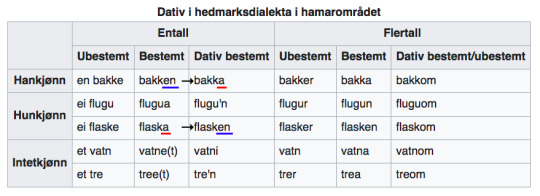
Note: German only has a one-way gender swap going on with its definite articles in the dative form. Feminine die becomes der (you can see it in the example sentence above - die Dusche and der Dusche). However, the masculine der does not become die in dative form - instead, it changes to dem.
If anyone has more examples of a dative case in Norwegian (or Swedish or Danish) and how it evolved throughout history I’d be really interested to hear it!
#norwegian#this became another norwegian-german comparison post#langblr#norwegian langblr#norsk#linguistics
114 notes
·
View notes
Text
Historic Centres of Stralsund & Wismar
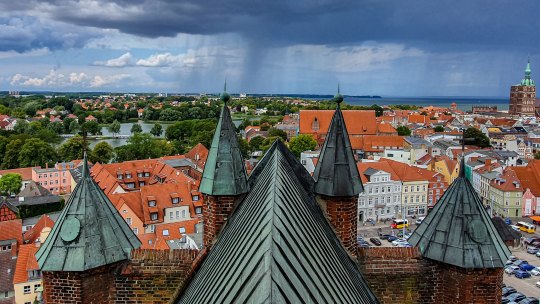
Embark with me on a virtual journey to the historic centers of Stralsund and Wismar, two enchanting Hanseatic cities nestled along the Baltic Sea in Germany. Recognized as a UNESCO World Heritage Site, these coastal gems beckon with their medieval charm, maritime legacies, and a tapestry of architectural wonders that echo the stories of centuries past.
Discover the rich Hanseatic history that binds Stralsund and Wismar. As key members of the Hanseatic League, these cities thrived as trading hubs, fostering cultural exchange and economic prosperity during the medieval period.
Step into Stralsund's Old Town, where gabled houses, Gothic churches, and historic market squares transport you back to the heyday of the Hanseatic League. Marvel at the imposing St. Mary's Church and the iconic Rathaus (Town Hall), testaments to the city's architectural prowess.

Wander through Wismar's expansive Market Square, surrounded by elegant Renaissance-style buildings that showcase the city's prosperity. The Wasserkunst fountain, a symbol of Wismar's maritime achievements, stands as a centerpiece in this historic square.
Admire the Brick Gothic architecture that defines both cities. From Stralsund's iconic St. Nicholas' Church to Wismar's St. George's Church, the red-brick structures stand as enduring symbols of the region's medieval craftsmanship.
The historic centers of Stralsund and Wismar received UNESCO recognition in 2002. The inscription acknowledges their well-preserved urban layouts, architectural ensembles, and maritime heritage, illustrating the symbiotic relationship between land and sea.
Explore the maritime museums in both cities, where exhibits showcase the maritime prowess that fueled their economic prosperity. From shipbuilding to seafaring, these museums offer a glimpse into the seafaring traditions that shaped Stralsund and Wismar.

Immerse yourself in the harbor views of both cities, where the rhythmic ebb and flow of the Baltic Sea have shaped their identities. The harbors are not just gateways to the sea but reflections of the maritime soul that runs deep in the veins of Stralsund and Wismar.
Partake in the vibrant festivals and cultural events that animate these historic centers. From medieval fairs to maritime celebrations, these events breathe life into the cobblestone streets, fostering a sense of community and celebration.
In conclusion, the historic centers of Stralsund and Wismar stand as living testaments to the resilience of Hanseatic heritage and the enduring beauty of coastal cities. As a UNESCO World Heritage Site, they invite us to traverse their medieval streets and harbor fronts, where the echoes of history resonate with each step. When you're ready for a digital sojourn through time, Stralsund and Wismar promise to captivate and inspire. 🏰🌊🇩🇪
#historic#center#wismar#stralsund#culture#unesco#world heritage#city#town#hanseatic#league#baltic#sea#travel#germany#europe
2 notes
·
View notes
Note
i'm not nordic so do correct me if i'm wrong, but i remember reading that norway was iceland's primary trade partner and overall link to the rest of the world even up to the 19th century (while in comparison it did minimal trading with denmark), so when norway became swedish in 1814 that was actually a pretty big blow to them. am i misremembering that/overestimating the magnitude of that aspect of their relationship?
I'm not extremely up to date in Icelandic history, but reading up on it, it does seem Iceland was dependent on Norwegian ships with goods between 1250s and up until just after 1400 - a period of only 150 years. At this point (1400) Norway was under Danish rule and had no official trade with Iceland, and after a brief period of British and German (Hanseatic) trade ships, Danish ships took monopoly over the trade in the area around 1600. It is possible there were Norwegian sailors on the Danish trade ships (more than likely actually), but Norway was not involved in these transactions and organisation.
All throughout Norway's union with Denmark, Iceland was more or less governed by Denmark and Norway had no involvement. Iceland was an official part of Norway until the reformation in 1536 where they became separate, and Iceland even more connected to Denmark.
I don't know what you have read, but my Norwegian sources (Store Norske Leksikon) only mentions Denmark as a prominent trading partner to Iceland during that time period. If you find the sources again, please send them my way - I'm interested in learning ✨
8 notes
·
View notes
Text
I love the idea of Varric as a playwright, but it's worth noting that without the printing press, his work probably still doesn't get very far very fast. And I do love that book-stabbing scene (although not as much as I hate damaging books).
So.
Historically, the Roman alphabet printing press was invented in 15th-century Germany. Since the Free Marches feel, to me, vaguely Hanseatic, this raises an interesting possibility: that the Theodosian printing press was actually invented not in Orlais (where there are plenty of Chantry scholars and Tranquil mages to copy manuscripts, and the peasants don't need to be literate (perhaps that's another cultural difference with Ferelden?)) but in the Free Marches, around the time of the Fifth Blight.
Varric, after all, isn't a writer, at least not a famed one, when we meet him (or else my memory is awful). He's a dissatisfied second son of a merchant family with a flair for the dramatic and a talent for storytelling: exactly the sort of person—to the extent that there is one type of person—who would jump at the chance to get his adventure tales (and terrible smut) to as many people as possible, and would possess the means to contract the owner of such a device to print those stories.
Initially, it's the sort of thing that has to be kept somewhat under the table: the Chantry is powerful, especially in Kirkwall, and mass dissemination of tawdry material would not be looked on fondly. But Varric is a master, his audience grows... and then Kirkwall finally explodes, and within the year half of Thedas "knows exactly what happened" because they read it in The Tale of the Champion.
(No wonder Cassandra, in her pursuit of international conspiracy, stabbed that book.)
Of course, this doesn't quite explain the existence of The Randy Dowager, but if Varric can gain international recognition within a decade of the invention of the printing press, Val Royeaux can probably develop an underground smut review for the nobility in the same period.
10 notes
·
View notes
Text
Deutschribing Germany
History
During most of its history, Germany was divided into several duchies, principalities, free cities, and ecclesiastical states.
Prehistory and ancient history
Germany is famous for the discovery of Homo neanderthalensis bones, as well as for having the oldest complete set of hunting weapons in the world, the oldest figurative work of art (Löwenmensch figurine), and the oldest figurative object (Venus of Hohle Fels). The latter two are attributed to the Aurignacian culture.
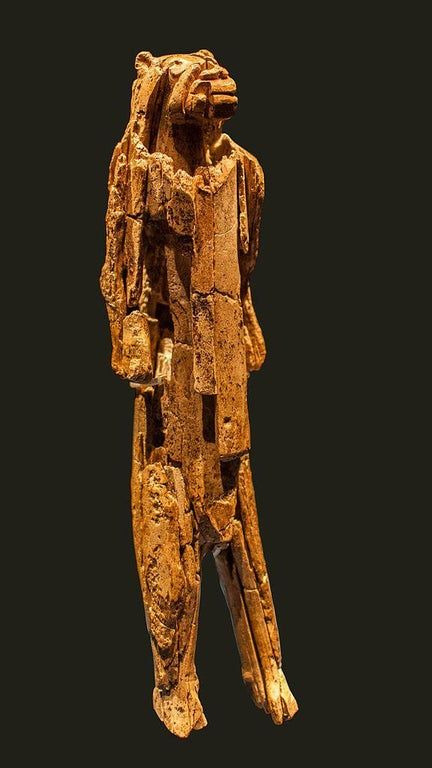
The country’s ancient history is characterized by the expansion of Germanic peoples, including the Alemanni, Franks, Goths, and Saxons. Around the same time, the Roman Empire started to invade Germanic lands, creating the province of Germania between the Rhine and Elbe rivers. Eastern Germany was inhabited by Western Slavic tribes.
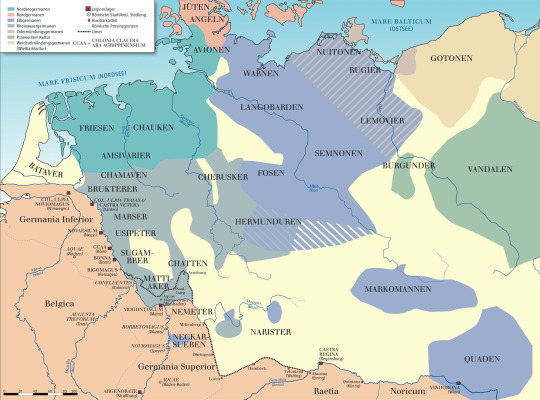
Middle Ages
The most powerful Germanic tribe, the Franks, eventually conquered many of the others, and in 800, their king Charlemagne founded the Carolingian Empire, which was later succeeded by the Holy Roman Empire, absorbing northern Italy and Burgundy.

Meanwhile, north German towns in the Hanseatic League prospered thanks to trade. This dynamic climate was the background for the invention of the printing press by Johannes Gutenberg.
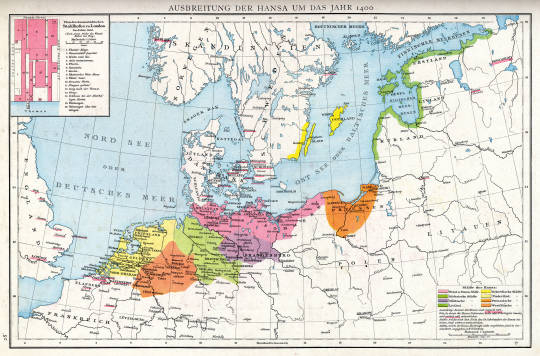
Modern history
Germany’s modern history is characterized by division, first due to religion and then as a result of the fight for political power. Following Martin Luther’s Protestant Reformation in 1517, religious conflict between Roman Catholics, Lutherans, and Calvinists devastated the country, especially during the Thirty Years’ War (1618-1648). The Peace of Westphalia ended religious warfare by allowing each state in the Holy Roman Empire to choose their official religion.

During the following two centuries, the Austrian Habsburg monarchy and the Kingdom of Prussia fought for dominance, eventually annexing free cities and ecclesiastical territories. Together with France and Russia, they competed for hegemony in present-day Germany during the Napoleonic Wars.
Following the fall of Napoleon, the 1815 Congress of Vienna founded the German Confederation, with the Austrian emperor as the permanent president. The revolutions of 1848 led to the rise of the German question, and King Frederick William IV of Prussia was offered the title of emperor but rejected it. In 1862, Otto von Bismarck was appointed as the Minister-President of Prussia and eventually defeated Austria and France. After the latter defeat, the German Empire was founded in 1871, with Prussia as the dominant constituent state and Bismarck forging alliances with Austria-Hungary and Italy.
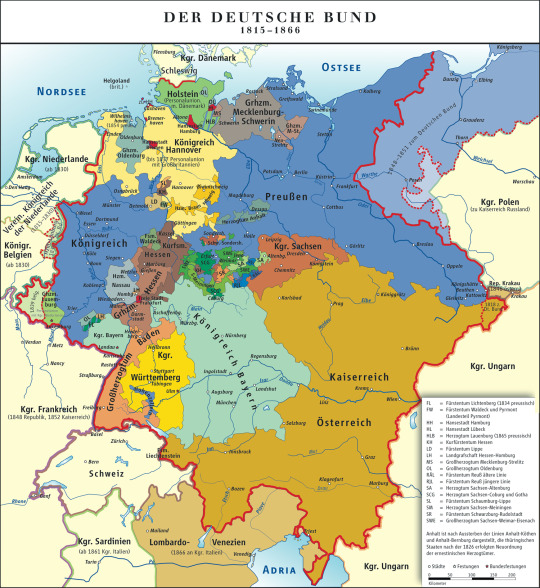
Contemporary history
When Archduke Franz Ferdinand of Austria was assassinated in 1914, Austria-Hungary declared war on Serbia, triggering World War I, which ended with Germany’s defeat and the Treaty of Versailles of 1919, because of which it lost many European territories and all of its possessions in Africa and the Pacific. The humiliation brought about by the Treaty is seen as influential in the rise of Adolf Hitler.
After the war, the Weimar Republic was established, during which there was a period of political instability and hyperinflation. The Nazi Party led by Hitler rose to power in 1932 as a result of high unemployment levels caused by the austerity and deflation policies put in place following the Great Depression. In 1933, Hitler obtained unrestricted legislative power and Germany became a totalitarian state. The regime created concentration camps for the internment of minorities, such as the Jews, Romani people, disabled people, homosexuals, and political opponents, rearmed its army, and implemented a program for economic renewal. In 1939, Germany invaded Poland, a move that started World War II. Following Hitler’s suicide, Germany surrendered, and the war ended.
The Allies, which had won the war, divided the country and its capital city into four occupation zones. In 1949, the western sectors, controlled by France, the United Kingdom, and the United States merged to form the Federal Republic of Germany (Bundesrepublik Deutschland) or West Germany. The Soviet zone became the German Democratic Republic (Deutsche Demokratische Republik) or East Germany. Konrad Adenauer was elected the first federal chancellor that same year. Both German states were reunified on October 3, 1990, following the fall of the Berlin Wall. East Germany joined the European Union as part of united Germany.
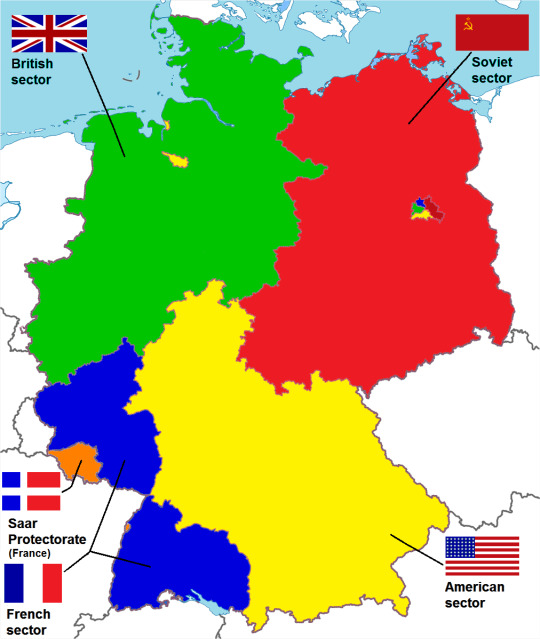
In the 2005 elections, Angela Merkel became the first female chancellor. She ruled the country until 2021.

4 notes
·
View notes
Text
Visby
Visby is a charming town located on the island of Gotland in Sweden. Known for its well-preserved medieval architecture and rich history, Visby is a UNESCO World Heritage site and a popular tourist destination. Here are some key aspects of Visby:
Historical Significance
Medieval Heritage: Visby was a major trading center of the Hanseatic League during the medieval period. Its wealth and…
View On WordPress
0 notes
Text
Welcome to the Ukraine (CIA, Listen Hard; This is Your History, Flip Metal)
Each one of these, has a dodge, that anyone can figure out; especially if you're an American spy, on United States soil.
Ted Bundy: Failed to snitch out France and become a chain smoker.
Uri Geller: Failed to be an anti-Semite to the Hanseatic League, one by one, in any order; however, was Gypsy, not "Romani", the rude slur for a field slave of Israelites prior to the conquest of Canaan by the Phillistines (the Gypsy).
Scott Peterson: Did not study HH Holmes, and realize, that he was not "Scottish", nor was anyone.
Jeffrey Dahmer: Attempted to lead reform, but didn't know that "gay", was a campus drug signal.
David Berkowitz: Told the NYPD, that he needed to apply a comic book, as a superhero.
Albert Fish: Confessed to murders he did not commit, but only after the murders were committed.
HH Holmes: An actual James Bond 007, but would not study whomever else was into the spy literature that he was featured in.
Eileen Wournos: Had never been taught the US Constitution, or the Civil War period, and studied Irish unions instead.
Richard Ramirez: Stole a spy's car, and was also a spy.
Ernest Charlebois: Stole an alias, from a salt shaker, to start DC Comics.
Huey Long: Started the entire foundational theory of the Office of Strategic Services, as Louisiana Governor, but then tried to make the entire country into a sublet office of his services, as a literature reader, to old men and "little women", their daughters, based on literature he stole from a permanent record of a draft fail from a senior intern (someone missed an agent to recruit).
Ivanka Trump: Attempted to defect, by incarcerating her father, for making her a police officer with the Japanese Diet.
Venus Terzo: Used dozens of aliases, as George W. Bush's daughter, to serve as a military cowgirl, unaware the sexual position was only possible in Massachusetts, otherwise "ghei", "too rich". It's a nautical sailor's gene, of piracy and smuggling origin, to be capable of girl-on-top, a guaranteed orgasm.
Cassie-Leigh Stock: Claimed a pedophile, was anything a heterosexual male seeking a fan would do, since she had the fantasy of sexually dominating men with a pedophile insult; a product of Aryan Nation literature, as a Puerto Rican child prodigy dominatrix.
William McKinley: Attempted to banish an Polish actor who had studied him as George Custer, by creating a list of legal fraud documents, for the Polish actor to read, causing the Pole's son to kill him, once US President.
Kim il-Sung: Volunteered for duty in Korea, by taking a Vietnamese girl out, for Korean BBQ. Actually Mexican. Grandson trapped running North Korea, as Supreme Leader, to this very day.
Charles Manson: Wrote an essential piece of Hollywood history, then went down for statuatory rape, by failing a drug score and making it with his own writing partners.
Karl Panzram: A prison warden, that tried to train hop, then murdered 30,000 people, on four continents, as an oil developer, after James Cagney studied him for his dramatic roles.
Fidel Castro: A technical program success, besides his family staying in power, during the transition.
Carlos the Jackal: Assigned to research film, made legendary spy movies and scripts for decades, after fellating men in their sleep, to produce CGI technician developers and slaves, all depicted in spy movies, all standalone without series, dozens of beauties, big and small and unknown and notorious.
Timothy McVeigh: Placed on medication required to take off the shelf; medication cleared for single case epithet, of Timothy McVeigh, by United States Marine Corps learning school, in Waco, Texas.
John Allen Muhammad: Deported overseas to save self from indictment for teaching hacking techniques through exchanged chips and datalink formats, failed to import back to United States from Will Smith refusing role as "Neo" in "The Matrix", a lesser reknowned acting style.
Albert de Salvo: Caught on stalk from prostitution don out of Westboro Baptist Church victimhood (a civil or federal service member that had inserted his erect phallus into a woman's rectum), refused to trade his place with a foreign serial killer on study.
David Charlebois: Same name as a dead first officer in 9/11, who was also homosexual, permanently registered as a confused gay man with a Law and Order detective lookalike as a female love interest beside him.
0 notes
Text
A recent episode of In Our Time discussed the Hanseatic League or Hansa, a loose organization that dominated Northern European trade in the medieval period. I’d never heard of it directly before but I certainly have heard of Lufthansa, the modern German airline named after, or inspired by the Hansa.
www.bbc.co.uk/sounds/pl…
0 notes
Text
youtube
"La Paloma", "The Dove" in English, is a popular Spanish song that has been produced and reinterpreted in diverse cultures, settings, arrangements, and recordings over the last 140 years. The Song Was Written By The Spanish Basque Composer Sebastián Iradier (Later Yradier) Around 1860 after a Visit to Cuba. In 1879, it was registered at the copyright office in Madrid as a "Canción Americana con acompañamiento de Piano.” Iradier Was To Die In Obscurity Within Few Years, Never To Learn How Popular His Song Would Become.
Very quickly, "La Paloma" became popular outside of Spain, particularly in Mexico, and soon spread around the world. In many places, including Afghanistan, Cuba, Colombia, Hawaii, the Philippines, Germany, Romania, Venezuela, Zanzibar, and Goa it gained the status of a quasi-folk song. Over the years, the popularity of "La Paloma" has surged and receded periodically, but never subsided. It may be considered one of the first universal popular hits and has appealed to artists of diverse musical backgrounds. There are more than one thousand versions of this song, and together with "Yesterday" by The Beatles, is one of the most-recorded songs in the history of music; it is certainly the most-recorded Spanish song.

Oh, little girl, yes
Ay, chinita, que sí
Oh, give me your love, oh
Ay, que dame tu amor, oh
Oh, come with me, little girl
Ay, que vente conmigo, chinita
Where do I live
A donde vivo yo
Oh, little girl, yes
Ay, chinita, que sí
Oh, give me your love, oh
Ay, que dame tu amor, oh
Oh, come with me, little girl
Ay, que vente conmigo, chinita
Where do I live
A donde vivo yo
Source: Musixmatch
Songwriters: Sebastian Yradier/Hardy Kingston
La Paloma lyrics © Warner Chappell Music Finland Oy, Universal Music Publishing B.v., Peer International Corporation, Hansa Musik Verlag Gmbh, Edition Intervox, Hanseatic Musikverlag Gmbh & Co Kg, Melodie Der Welt Gmbh & Co Kg, Cress Publishing Gmbh
0 notes
Text
Analyzing Denmark-Germany Maritime Disputes: Examining Historical, Legal, and Geopolitical Factors
Understanding the Denmark-Germany Maritime Disputes ===
Maritime disputes between Denmark and Germany have existed for centuries, stemming from historical, legal, and geopolitical factors. These disagreements involve conflicting claims over specific regions in the North Sea and the Baltic Sea. Understanding the complex nature of these disputes requires a comprehensive analysis of their historical context, the legal framework governing maritime boundaries, and the geopolitical factors influencing the strategic interests of both countries. By examining these factors, we can gain a deeper understanding of the key points of contentions and explore potential resolutions for these ongoing disputes.
=== Historical Context: Tracing the Roots of the Disputes ===
The maritime disputes between Denmark and Germany can be traced back to the Middle Ages when control over key trade routes and access to valuable fishing grounds were highly sought after. The Hanseatic League, a powerful trading alliance, played a significant role in shaping the region's maritime boundaries during this period. The conflicts intensified during the 19th and 20th centuries as both countries sought to expand their naval presence and secure valuable resources. The legacy of these historical tensions continues to influence the nature of the disputes today.
=== Legal Framework: Examining International Laws and Agreements ===
The legal framework governing maritime boundaries is a crucial aspect of analyzing the Denmark-Germany maritime disputes. The United Nations Convention on the Law of the Sea (UNCLOS) provides a framework for resolving such conflicts by establishing guidelines for the delimitation of exclusive economic zones (EEZs) and continental shelves. Both Denmark and Germany are signatories to this convention, which grants them certain rights and obligations. However, interpreting UNCLOS provisions and determining boundaries in complex maritime regions remains a challenge.
=== Geopolitical Factors: Unraveling Strategic Interests ===
Geopolitical factors play a significant role in the Denmark-Germany maritime disputes, as both countries have strategic interests in the contested areas. The North Sea and the Baltic Sea are vital for energy resources, fisheries, and transportation routes. Denmark seeks to protect its offshore wind farms, while Germany aims to secure its access to important shipping lanes. Additionally, these disputes are intertwined with the broader regional dynamics, including competition for influence in the European Union and the NATO alliance.
=== Key Points of Contentions: Analyzing Disputed Areas ===
Several areas are at the center of the Denmark-Germany maritime disputes. One such area is the North Sea's southern boundary, where both countries claim overlapping continental shelves. This region is rich in oil and gas reserves, making it a significant economic and strategic asset. Another contentious area is the eastern part of the Baltic Sea, specifically the maritime boundary between the Danish island of Bornholm and the German island of Rügen. This region is important for fishing and maritime transportation, leading to conflicting claims over its exploitation.
=== Conclusion: Implications and Potential Resolutions ===
The Denmark-Germany maritime disputes have far-reaching implications for both countries and the broader region. These conflicts impact resource exploration, fishing rights, and shipping routes, thus necessitating a resolution to ensure stability and cooperation. Potential resolutions include bilateral negotiations, arbitration, or resorting to international courts. However, reaching a mutually acceptable agreement will require a delicate balance between historical claims, legal interpretations, and geopolitical interests. As both Denmark and Germany continue to develop their maritime capabilities, finding a resolution becomes crucial for maintaining peace and stability in the region.
===
Analyzing the Denmark-Germany maritime disputes reveals the intricate interplay of historical, legal, and geopolitical factors. These conflicts have their roots in centuries of competition over trade, resources, and strategic interests. Understanding the legal framework governing maritime boundaries and the geopolitical dynamics shaping these disputes is vital for exploring potential resolutions. As both countries navigate the complexities of these disagreements, finding a mutually satisfactory solution will be crucial for ensuring long-term stability and cooperation in the North Sea and the Baltic Sea regions.
Read the full article
#AnalyzingDenmark-GermanyMaritimeDisputes#AnalyzingDenmark-GermanyMaritimeDisputes:ExaminingHistorical#andGeopoliticalFactors#Denmark#Denmark(DIS)#Denmarkcontinentalshelfmap#Denmarkeezmap#Denmarkexclusiveeconomiczonemap#Denmarkinternalwatersmap#Denmarkmaritimeboundaries#DenmarkMaritimeDisputes#Denmarkterritorialwatersmap#Germany#Germanycontinentalshelfmap#GermanyEEZmap#Germanyexclusiveeconomiczonemap#Germanymaritimeborders#Germanymaritimeboundaries#GermanyMaritimeDisputes#Legal#UnderstandingtheDenmark-GermanyMaritimeDisputes
0 notes
Text
Three Wheelers Market Is Likely to Experience a Tremendous Growth in Near Future
Latest edition released by AMA on Global Three Wheelers Market to regulate the balance of demand and supply. This intelligence report on Three Wheelers includes Investigation of past progress, ongoing market scenarios, and future prospects. Data True to market on the products, strategies and market share of leading companies of this particular market are mentioned. It’s a 360-degree overview of the global market’s competitive landscape. The report further predicts the size and valuation of the global market during the forecast period.
Some of the key players profiled in the study are:
Bajaj Auto (India)
Mahindra and Mahindra (India)
Piaggio (Italy)
Atul Auto (India)
Scooters India (India)
Terra Motors (Japan)
Lohia Auto (India)
JS Auto (United Sates)
Tempo Hanseat (Germany)
TVS Motor Company (India)
Wuxi Weiyun Motor Co., Ltd. (China)
Three wheelers are used for goods carriage and public transportation. These are available in electric variants, diesel, petrol, CNG, and LPG. Increasing production of electric powertrain three wheelers across the globe driving the demand for three wheelers. For instance, Bajaj Auto announced to expand production of its three-wheelers up to one million per annum. Further, market players are also focusing on technological development, for example, recently in 2018, Mahindra & Mahindra launched a new range of electric three-wheeler with IP 67 rated battery box. In addition, increasing demand from emerging economies expected to boost the demand for three-wheelers over the forecasted period.
Market Trends: Growing Applications of Lithium-Ion Technology in Three Wheelers
Rising Focus on Zero Emission Technology for Three Wheeler
Opportunities: Emphasizing N Production of E-Rickshaws
Growing Demand of CNG/LPG Three-Wheelers
Increasing Demand of Passenger Carrier Three-Wheeler from Emerging Countries
Market Drivers: Rise in Production of Three-Wheeler Vehicles
Increasing Government Initiatives to Promote Eco-Friendly Vehicles
Challenges: Increasing the Speed of Three Wheeler Vehicles
Presented By
AMA Research & Media LLP
0 notes
Text
Szczecin 4K Time Lapse (2)
youtube
(Pl) W X wieku Ibrahim ibn Jakub opisał Szczecin jako gród o nazwie Sadżin (niekiedy określany także jako Sedinum lub Sasin). Badacze historii uważają, że dzieje słowiańskiej osady mogą sięgać przynajmniej niecałych 2 tys. lat. Dawny gród uchodził za największe miasto i "matkę innych grodów". Miasto i region bardzo długo opierały się chrystianizacji. DO Polski na pół wieku region przyłączył Mieszko I ,później republika odzyskała niezależność i na kolejne pół wieku została podpita przez Chrobrego. W XIII wieku Szczecin stał się miastem hanzeatyckim. Wtedy ukończono także budowę murów obronnych. Po wygaśnięciu rodu Gryfitów region przechodził w ręce Brandenburgii, Danii i Szwecji. Każdy okres pozostawił po sobie niezwykłe zabytki jednak w czasie nalotów alianckich pod koniec II wojny światowej miasto poważnie ucierpiało. Z jego panoramy zniknęły wspaniałe mosty zwodzone i wiele znakomitych budowli. Dziś Szczecin przywraca do życia tereny po dawnej "starówce". Zmienia się także wyspa Łasztownia-dawne zaplecze miasta pełne spichlerzy oraz liczne tereny nad Odrą.
(Eng) In the 10th century, Ibrahim ibn Jakub described Szczecin as a settlement called Sadżin (or Sedinum, Sasin). History researchers believe that the history of a Slavic settlement may reach at least less than 2,000. years. The former stronghold was considered to be the largest city and "the mother of other strongholds". The city and the region resisted Christianization for a long time. Mieszko I joined Poland for half a century, then the republic regained its independence and for the next half a century it was drunk by Chrobry. In the 13th century, Szczecin became a Hanseatic city. At that time, the construction of the defensive walls was also completed. After the Griffit's family died out, the region passed into the hands of Brandenburg, Denmark and Sweden. Each period left remarkable monuments, however, during the Allied air raids at the end of World War II, the city suffered severely. Magnificent drawbridges and many remarkable buildings have disappeared from its panorama. Today, Szczecin is bringing back to life the area of the former "old town". The island of Łasztownia is also changing - the former hinterland of the city full of granaries and numerous areas on the Oder.
#time lapse#timelapse#stettin#szczecin#hanseatic#city#urban#motion#Polska#Poland#travel#trip#podróże#architecture#architektura#jacob kirche#church#katedra#zamek#castle#clock#zegar#free music#blue wolves#delsograf#oder#odra#tall ships#holiday#europe
0 notes